Inspiring walks, stunning scenery and delicious food are just a few of the pleasures the Cinque Terre has to offer. Sarah Lane revisits one of her favourite locations in Italy
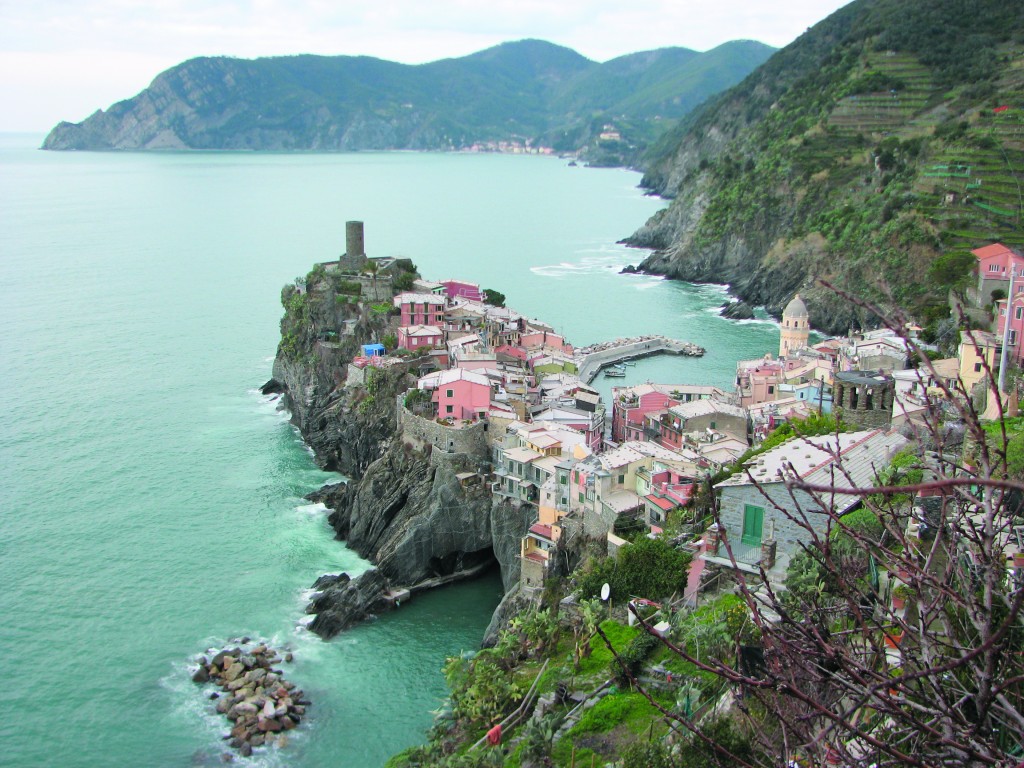
The northwest coast is home to five idyllic villages – Riomaggiore, Manarola, Corniglia, Vernazza and Monterosso. Collectively known as the Cinque Terre, the cluster of pastel-shaded villages have long been one of my favourite places in Italy and I am always thrilled by any chance to return.
The landscape surrounding the villages – the result of centuries of co-operation between man and nature – is incredible. Row upon row of narrow cultivated terraces, held up by over 650,000km of dry stone walling, line the surrounding steep cliffs. These were built through the ages by local residents without help from animals or sophisticated machinery – the ledges are too narrow for mules or tractors – and are recognised as unique.
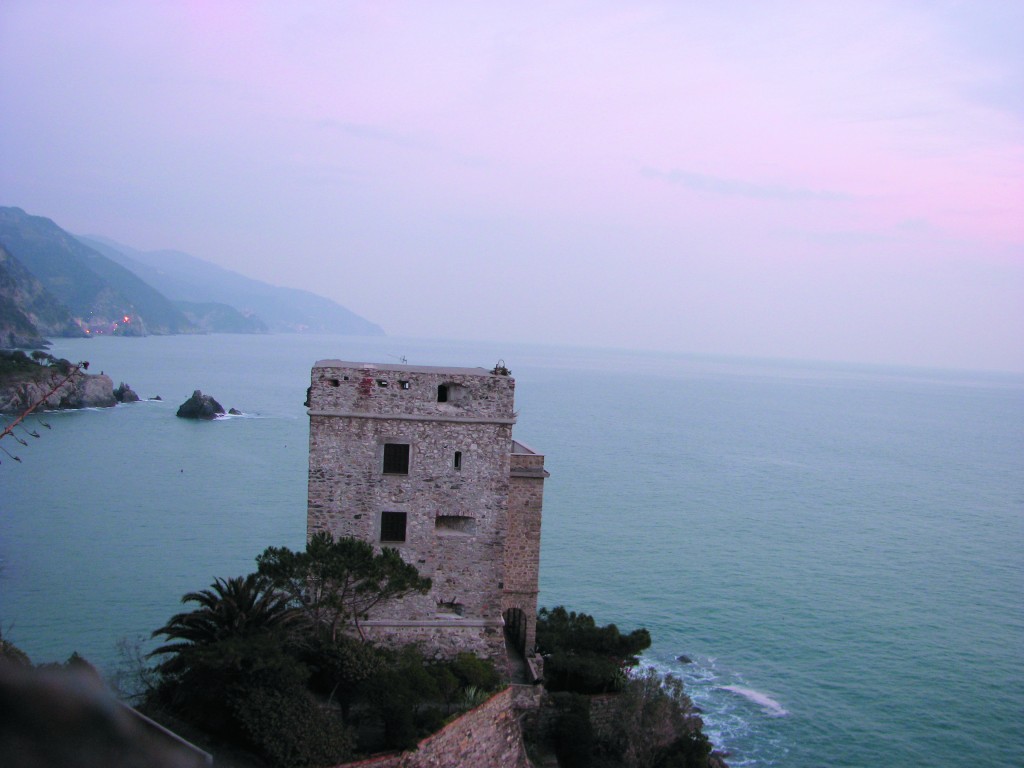
The area’s landscape features among UNESCO’s World Heritage listed sites and the history of human toil is celebrated in a series of colourful murals. The main painting dominates the station square in Riomaggiore. Artist Silvio Benedetto has been commissioned to paint more works for all five villages.
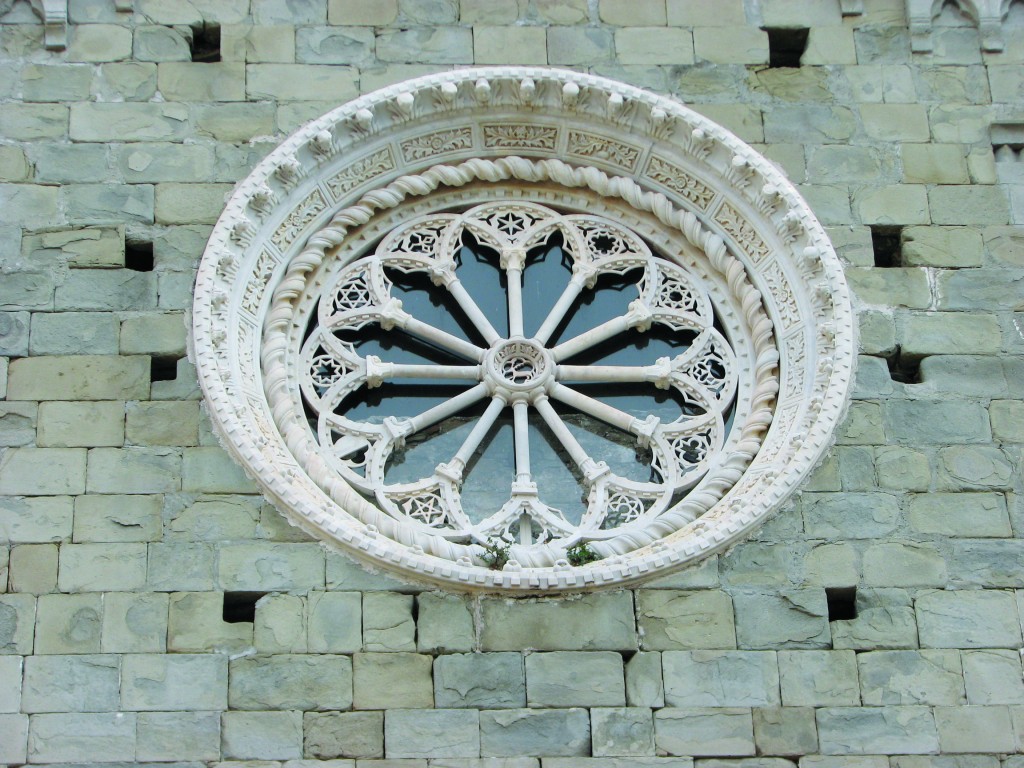
Benedetto is also responsible for the restoration of Monterosso’s Il Gigante, a statue of Herculean proportions wedged into the rocks at the end of the beach. The 14m statue of Neptune, damaged during World War II, stands below the Art Deco-style villa once inhabited by the Nobel prize-winning poet Eugenio Montale. The muscle-bound hero symbolises the centuries of labour that went into the creation of the Cinque Terre’s terraced backdrop.
Any risk of tourism overkill is avoided thanks to the well-planned initiatives and close monitoring carried out by the Cinque Terre National Park Organisation. One such initiative is the park’s eco-quality award, given to hotels, restaurants and even local products that are environmentally friendly – a logo to look out for.
Protected environment
The sea around the Cinque Terre is also unique, and the protected marine park was inaugurated in 1997, two years before the land-based national park. No less care is taken over safeguarding the delicate balance of the marine environment and the different categories of protection (banning motor-boats, fishing and so on) of the various zones are strictly controlled. Now, corals thrive, dolphins are regular visitors and you can even see the odd passing whale.
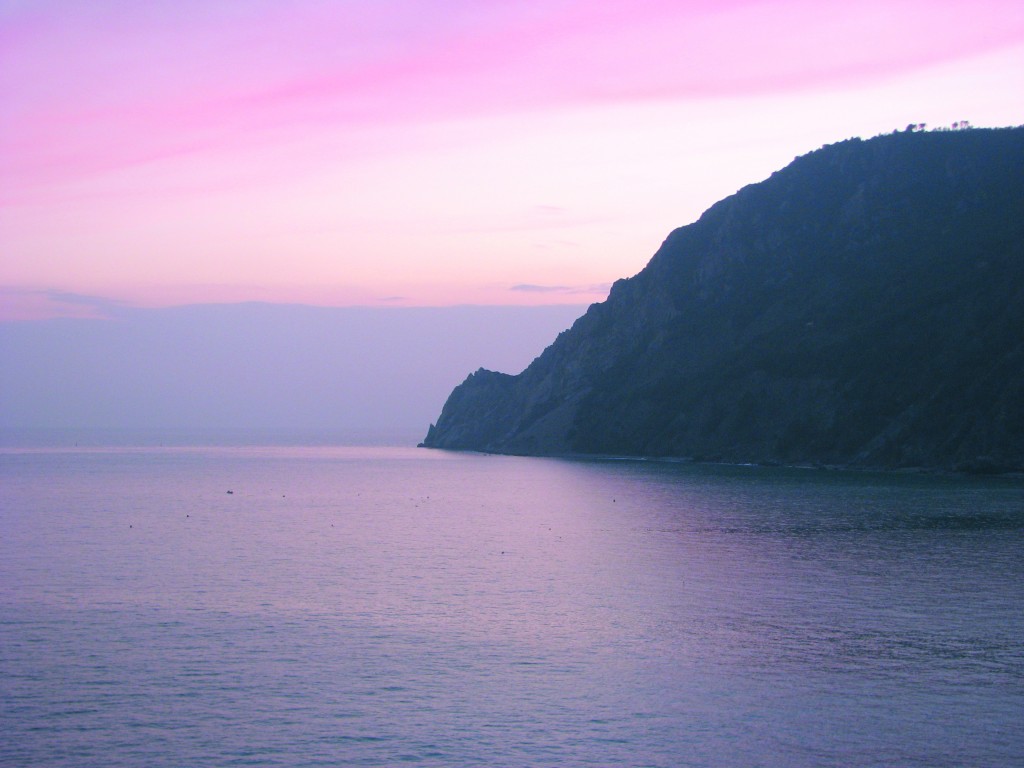
The last time my partner Malaga and I were here was in October, two years ago. It was high season, and busy, with walkers on the footpaths and boats running between villages. We had stayed in Monterosso, the largest, most northern of the villages, and the only one allowing traffic.
This time our base was at the other end of the string, in Riomaggiore, and we had chosen mid February’s low-season tranquillity. Despite the perennial mild climate, lots of hotels, shops and restaurants close at this time of year. Not even the boat service was up and running yet, so we were land-bound, but it’s at these times that a place like this shows its true personality – the locals are more inclined to chat and the footpaths are quiet and empty. Arriving in Riomaggiore after a long train journey from Bologna, we were ready for a relaxing weekend.
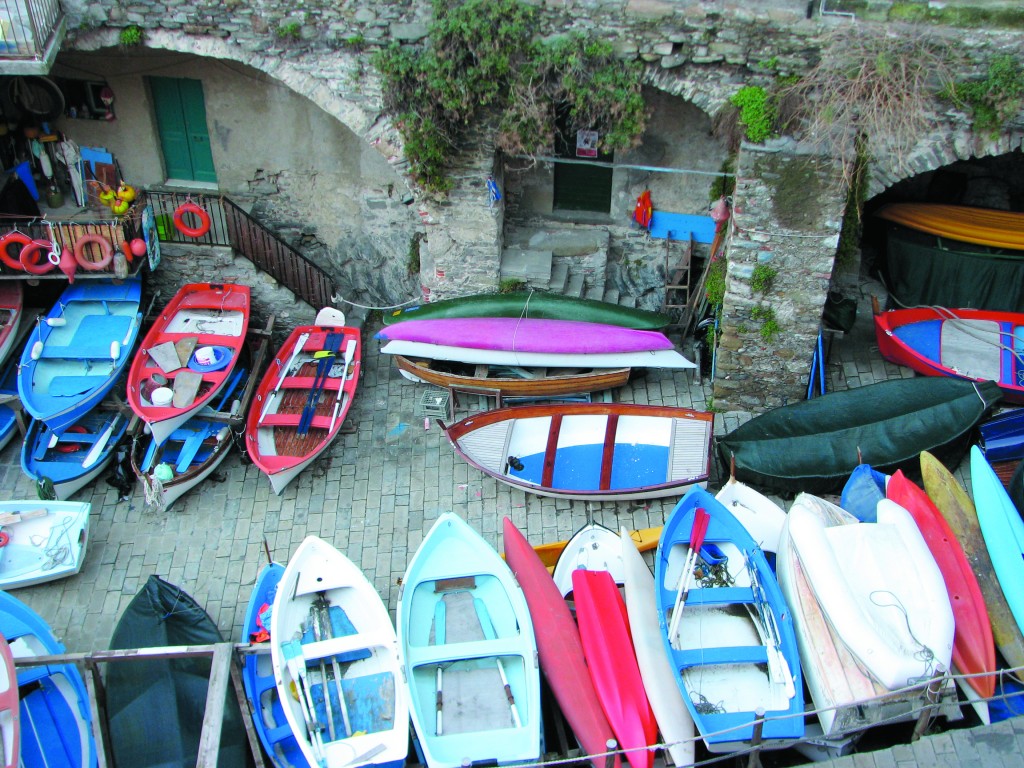
A room with a view
We were shown to our flat, in Casa Daniela, which was owned by the Cinque Terre National Park, and were delighted that it was spacious and well equipped, but it was on opening the windows that I really had to contain myself. The view looked right over the ramp leading from the tiny port and with colourful fishing boats parked either side, the sight, smells and sounds of the sea wafted through the windows to fill the building.
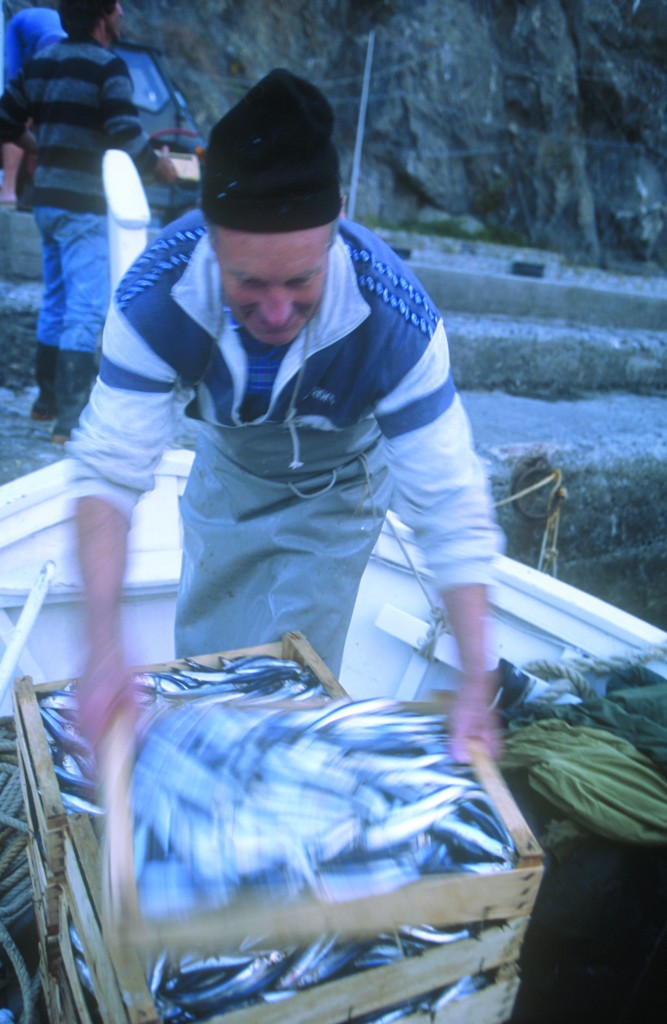
Soon, another smell was to grab our attention – that of grilled fresh fish. At the other end of the tiny port is La Lanterna, one of Riomaggiore’s best restaurants. Pleasantly informal service, nautical décor and a menu of local specialities made for a terrific evening. Having ordered pasta with pesto and tomato – a combination often served in Liguria, where pesto sauce originates – I was spared the attentions of the restaurant cat, who was more interested in fishy dishes.
By the time we climbed the steps to Casa Daniela, we were ready to be lulled to sleep by the waves gently lapping against the sea wall. Like many buildings in Riomaggiore, our apartment had an entrance at the front and at the back. As well as providing leg-saving exits on two different levels of the steep, narrow village, this also gave residents an escape route in desperate times. Around the 16th century, pirates, particularly Saracens, were a recurrent phenomenon.
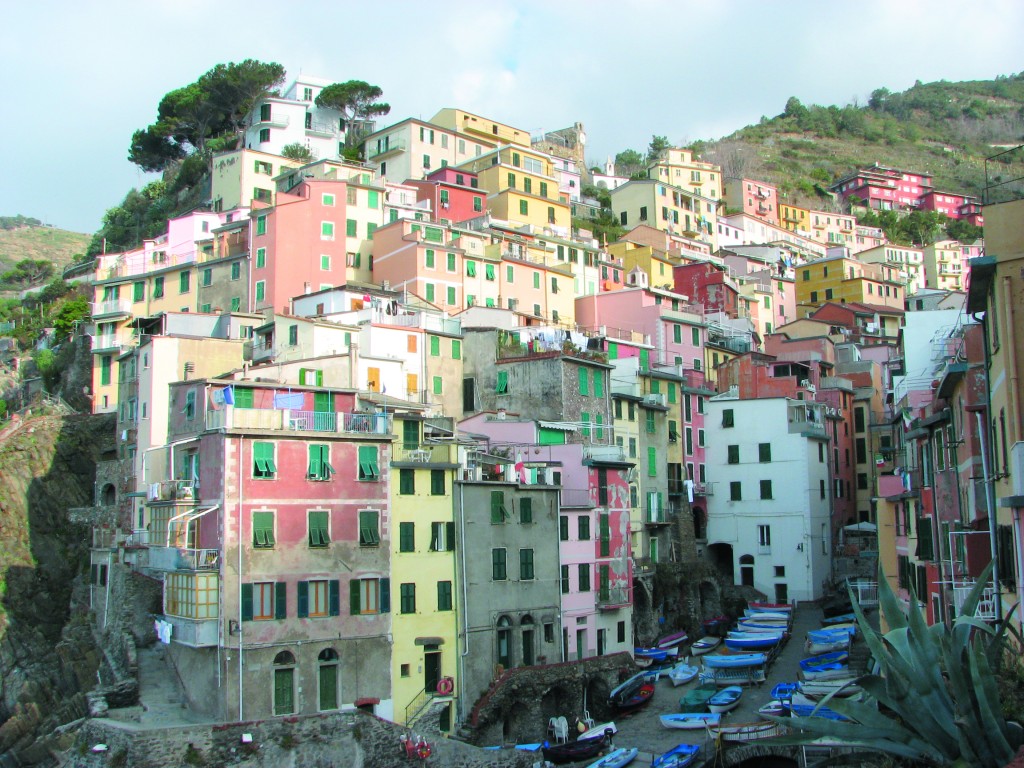
Vernazza was the most at risk, its natural harbour a definite plus point for would-be invaders. Allied with Genoa during the maritime republic’s heyday, much of Vernazza’s defence system is still visible. Not much remains of the castle, Castello Doria, but it is worth a visit and there are several lookout towers still in perfect condition, with one on the cliff edge now a restaurant and bar. Nominated as one of Italy’s 100 most beautiful villages, Vernazza still takes on invaders, but they come to admire and enjoy, not attack and destroy.
We woke the next day to clear blue skies. We pulled on our hiking boots and hit the footpath. Walking is the main pastime in Cinque Terre – and the only way to see the dry stone walls and cultivated terraces close to. The footpath (No. 2) linking the five villages takes about five hours to walk, not allowing for stops, but stops are essential, as each village has its own selection of sights. The ideal way to visit the area is with a combination of boat and train rides, as well as walks.
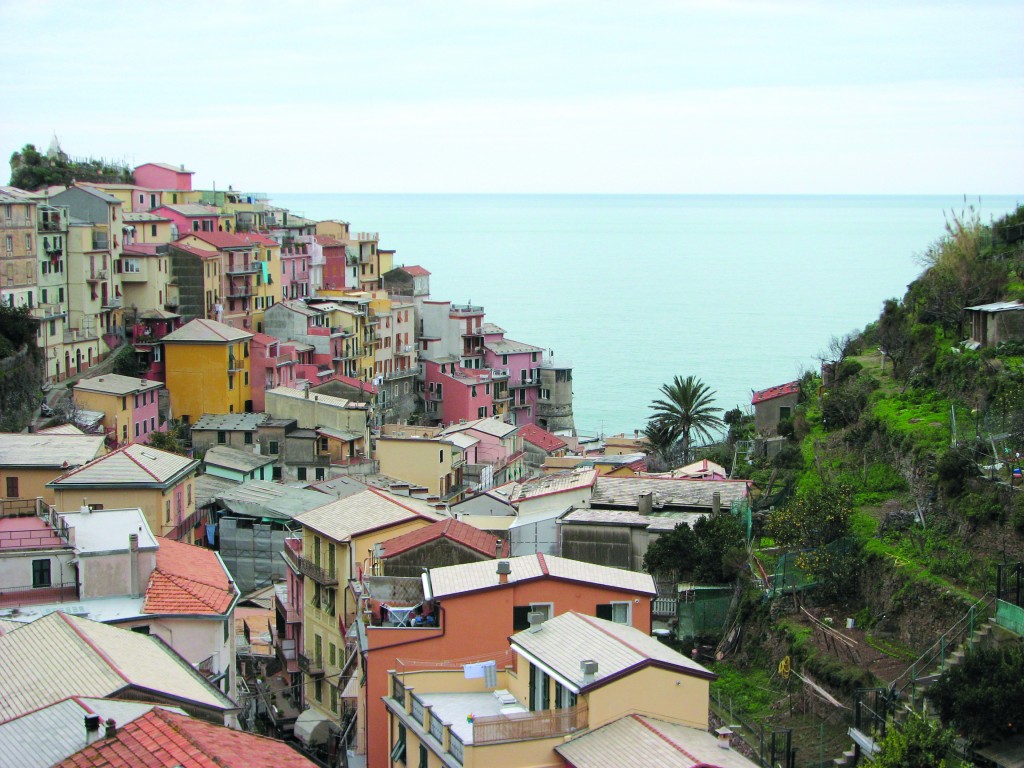
The trains are quicker, cheaper and more frequent, going through tunnels and stopping at all five villages within about 20 minutes, but the boats are far more scenic.
Even non-walkers, baby buggies and wheelchairs can tackle the smoothly paved first part of path No. 2, the romantic Via dell’Amore. We strolled along in silence, taking in the fantastic views and the peace and quiet of the place at 8.30am. We took the regulation pictures of the kissing-couple silhouette, the symbol of this stretch of path, but didn’t contribute to the board for romantic messages.
Reaching Manarola, the second village, we found it a bit livelier and were glad to find some delicious fresh focaccia for breakfast – another of Liguria’s gastronomic strong points.
It is thought that Manarola’s name probably stems from magna rota. The village has a large water wheel that was once used for olive oil production, and still stands today, although it no longer turns. A bit further up from the wheel is the village’s panoramic main square, where the 14th-century San Lorenzo church looks out over the coast. Strolling back down to the quay at the bottom of the village, we came across a fishing boat and looked on as the fishermen sold fish from the nets.
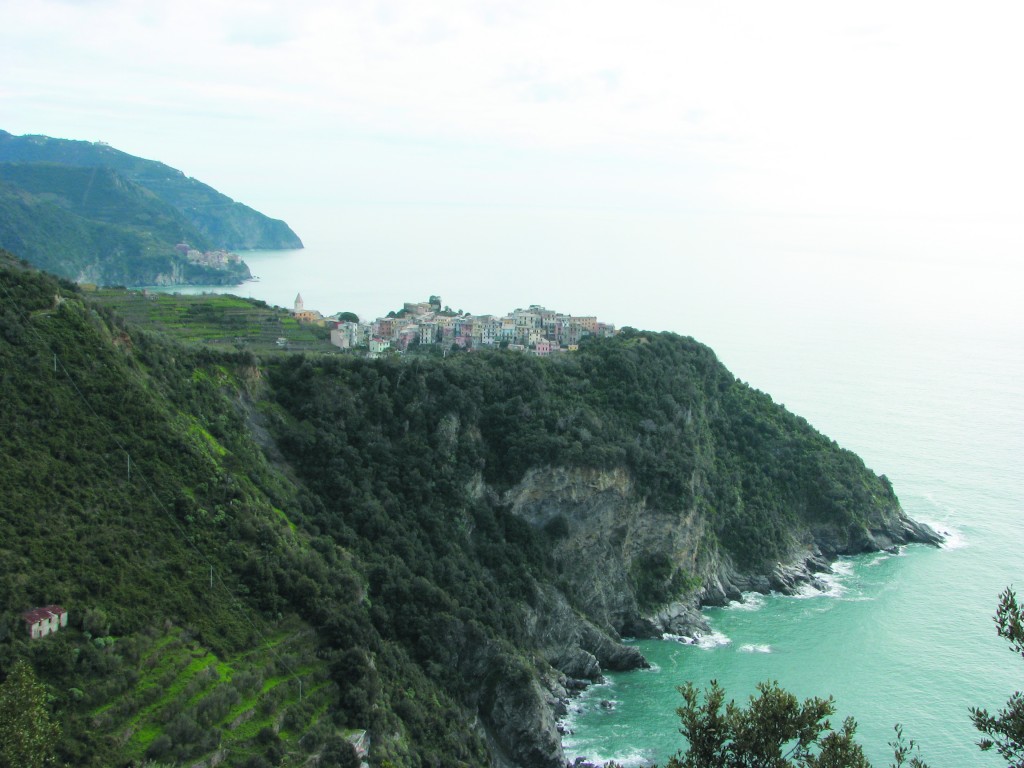
The next and middle one of the five is the hilltop village of Corniglia. In February, the path here from Manarola was closed, so we took the train. From the station, we decided to walk up the road, through lemon groves and vineyards, rather than tackling the long zigzag staircase, and reached Corniglia at the same time as and a lot less hot and sweaty than others who’d opted for the steps. Corniglia is not a marine settlement like the other four – an antlered deer is the village’s symbol. You can see one at the centre of the window on the facade of the San Pietro church.
Corniglia has ancient origins, and it has been suggested that wine vessels bearing the word Cornelia, found during excavations at Pompeii, originated here. Wine is important throughout the Cinque Terre area and the local Cinque Terre DOC – a dry white produced with grapes grown on the cliff-side terraces – is delicious and crisp and makes a perfect accompaniment to the locally grown olives. Another wine to try is Sciacchetrà. This dessert wine has a spicy flavour and has been produced here for centuries. Both wines have had DOC status since 1973.
The next section of path (Corniglia to Vernazza, and probably the most attractive part of the trail) was open. It winds through ancient olive groves, ending up by opening out onto fantastic views down over Vernazza and the stunning coastline. After a late lunch of more local delicacies and a relaxing stroll around the village, we hopped on a train to Monterosso. February’s early sunset meant that we had to rush to reach the Capuchin convent viewpoint before nightfall.
Breathtaking sights
The church’s panoramic position on the promontory, which separates the old part of Monterosso and the more modern Fegina Bay area, is fantastic. Walking down in the dark, our only illumination was the glow of lemons in the orchards. Lemons and oranges are an important crop on the terraces, particularly around Monterosso. Another fruit that we saw a lot of was the exotic-looking prickly pear, testifying to the mild climate.
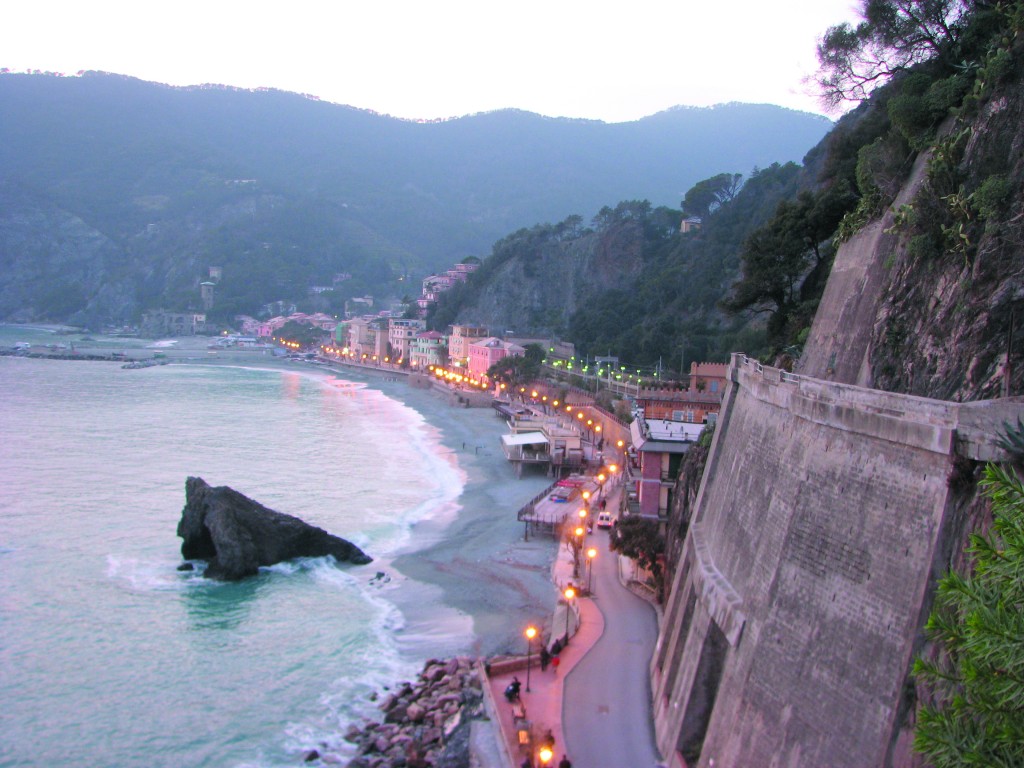
There are far more places to walk in the Cinque Terre National Park than just between the villages, though, and the following morning we set out to explore. From Riomaggiore it’s 40 minutes uphill to the Santuario di Montenero, halfway along path No. 3. The church has always been an important one for the fishermen of the area, and its position overlooking a never-ending stretch of coast in both directions is breathtaking.
We passed through vineyards, and saw people working their land, agile as mountain goats on the terraces. Although most of the heavy work is still done by hard graft, a system of monorail tracks, introduced in the 1980s, now gives farmers some reprieve, as cars carry the harvested produce down, or tools up.
As the acclaimed poet and one-time local resident Eugenio Montale put it, the residents of the Cinque Terre, who continue to dedicate their lives to creating this heroic landscape, with years of labour and toil, really are the heirs of Hercules.
